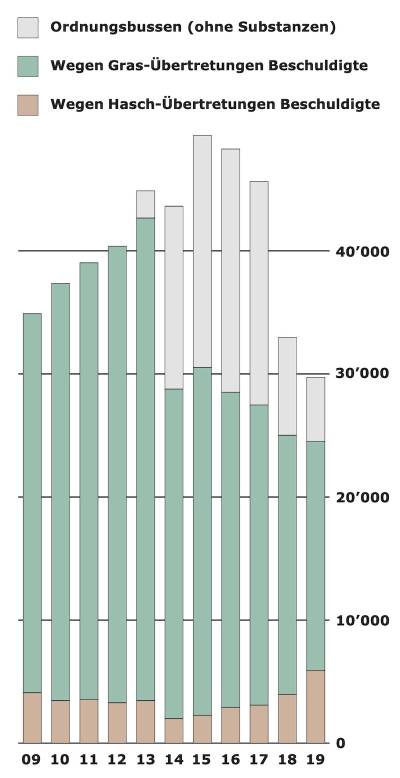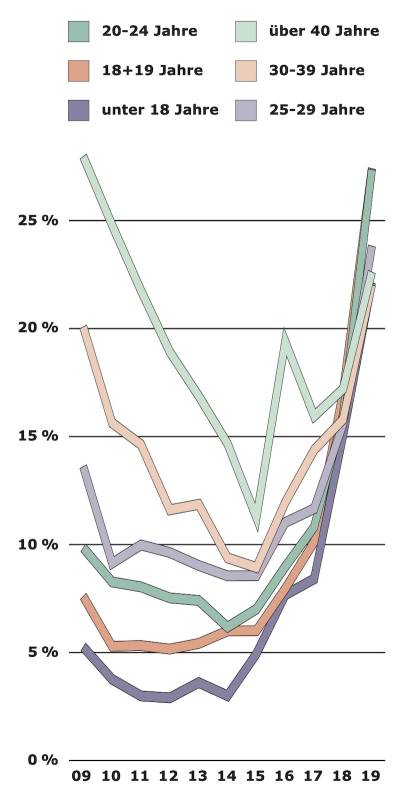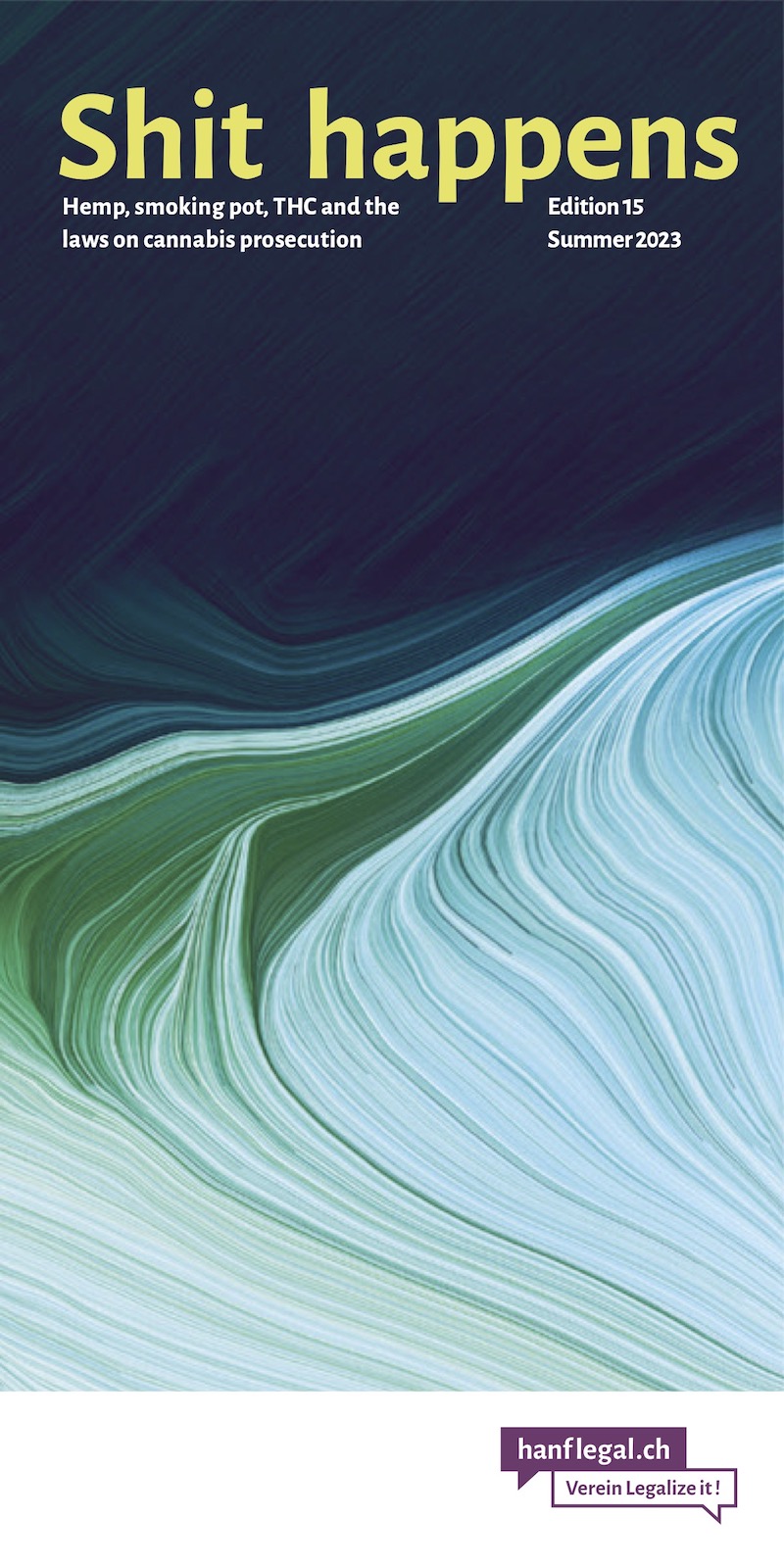- THC & Law:
Hash to weed ratio : Hash on the rise
Most of the arrests are still for weed. However, the hash-related arrests are catching up. Now, younger people have even overtaken older people in terms of the proportion of hash, whereas previously hash was consumed almost exclusively by older people.
Those accused of cannabis violations after hash/weed
The first graph shows the evolution of those accused of hash (brown) versus weed (green). To this we put the fixed penalties (OB, gray) so that we can show all transgression prosecutions, even if the substance is not recorded for OB.
We summarize the OB categories as follows: Hash = hashish, hash oil, and synthetic cannabinoids; weed = cannabis, marijuana, hemp (young plant, plant fresh, plant dried), and hemp seeds.
Even though most of the people involved are still being reported for weed products, we can clearly see that the advance of hashish has continued, even intensified.
In terms of numbers, with 5,905 hashish defendants, the value of 2009 (4,095 defendants) has been exceeded - and this despite the fact that the total number of defendants has decreased.
The proportion of hash defendants was 11.7% in 2009, fell to 6.9% in 2014 and rose to 24.1% in 2019.
But even so, those charged with weed still make up the clearly larger share in 2019, with 18,613 cases. But the ratio between hash and weed has decreased from 1:7.5 to 1:13.5 to now 1:3.2.
Hash share among transgression defendants by age group
It was clearly the young who had brought the weed boom forward. The older ones had grown up with hash almost without exception. Therefore, the proportion of hash users among the elderly had always been much higher than among the young. For example in 2009: In our category with the over 40-year-olds, the hash share was a respectable 28%. Among those under 18, it was 5% (see chart at right). In the years up to 2015, the share of hash fell sharply, especially among the two oldest groups, to around 10%. But among younger people, the figure tended to stagnate, and from 2015 the share of hashish began to rise rapidly in all age groups.
In 2019, the younger cohorts have now even overtaken the older ones in hash use. The 18- to 19-year-olds and the 20- to 24-year-olds are now together at the top, followed by the 25- to 29-year-olds. Only then do the over-40s follow. This reversal of the order still amazes us. The values of the different categories are now quite close to each other (22 to 27.4 %).
Support our work with a donation:
Bank transfer
Account number (IBAN):
CH02 0900 0000 8709 1354 3
Full account details
Or scan this QR code with your eBanking App (ZKB, Revolut, Postfinance, …):

Or open/share the QR code as PDF file with your eBanking App.
Credit card
Donate via credit card
Verein Legalize it!
Quellenstrasse 25
8005 Zürich
Threema ID 7NH65RBY
Don’t miss anything! Follow us on social media:


